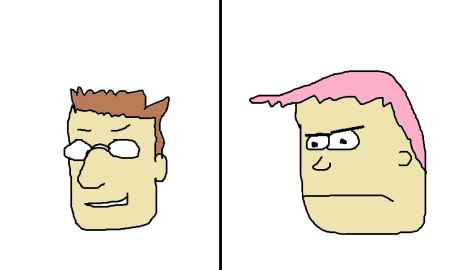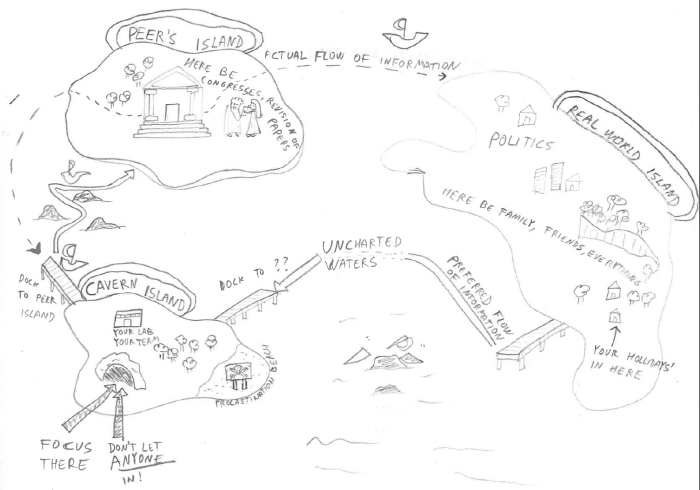Note: This blog post was first published online here, in a blog managed by a group of fellow PhD students (including me) that attended a course on increasing the impact of ecological findings. I hope you like it!
The rise of (mis?)information
Since the beginning of the last millennia, we have seen the number of scientists skyrocket. It is getting cheaper to train new scientists and that is great. Access to information is as easy as ever! However, more access to information also means that the filters that we once had to the information we receive are no longer there. We can choose anything we want to see. Even if it is plain crap. And that is having some dire consequences already. Donald Trump’s election was made easier by the huge lot of internet trolls whose sole objective was to misinform people.

And now, climate change deniers as well as misinformation about ecology have more influence on this world than before. If before the US elections it was already necessary for us ecologists to step out of our comfort zone, now I think it is mandatory.
As citizens, there are many things we can do right now. Donating to NGOs is probably a good way to influence governments into adopting eco-friendlier and wildlife friendlier measures. But how can we as scientists make the difference?
Where do we ecologists stand?
If we think ourselves as a kind of subset of biology, then we are not really a good representation of the biologist community because all of us study environment and then there’s a good bunch of other biologists studying ways to cure every sickness on the planet. Our aim is to save us from destroying all that is left from the natural world around us. From a fairly broad point of view we also do research on medicine but at another scale.
But our message is not reaching the audience how we most desire. Part of the problem might relate to the fact that we rather spend our time doing things that will in the end directly relate to us getting our funding. But for governments to give away funding for environmental biology we need to be able to do the same that our human biology friends do: make people see why they benefit from your research.
For this reason, and because of increased misinformation, it is imperative that we keep ourselves closer to the non-researchers. We need to show what we do and involve them. Someone once said the best way to make someone interested about nature is to involve him(her) in it.
The Ecologist’s guide to the galaxy*
Now, substitute “the galaxy” with “forcing your buttocks out of your chair and bring your science to the society” and you get the idea of what this is about. This is hardly anything else but a message to myself, which I will try to do more and more during my career. Those rules are a compilation of what all of the people behind this blog learnt during their week-course on making science matter along with my personal thoughts. Hopefully I did not miss any important note.
After assembling the guide you’re about to read I noticed that I could somehow establish an analogy to cellular respiration. So from now on, think of the glucose molecule as your research potential outcome and energy storing as ATP as the points of public outreach that your research gets. You can jump to the TL;DR image at the end if you are in a hurry instead.
Step 1 – Exist!
First things first. You need to be there. Nowadays if we don’t expose ourselves online we barely exist. Make yourself visible! Be transparent with your research. If possible, be specially focused in showing yourself to your community at the local scale. They are probably the ones most interested in your work anyways! +2 protons +2 ATP
2 – Teach and move
Never lose the opportunity of trying to teach someone about your work. With this I mean you should never give up on doing that, even if you think the other person is too uninstructed (is there even such a thing like too uninstructed?). If someone asks things about you and your project, then (s)he might be interested in what you have to say! And if you can do it in a way that you manage to trigger some change in the other person, the best! +2 protons +2 ATP
3 – Hear and understand other points of view
Why would some people prefer to support the construction of a new football field rather than to keep a protected area? Explain why you want to protect the forest but hear their point of view. Your worst enemy is your best counselor. And there could be chance for a common ground. And if there is agreement everyone will be better off. +2 protons +2 ATP
4 – Involve
If you can involve people into your work, for example through citizen science, that is great! Getting direct feedback from non-specialists helps us keep our feet on the ground. And people will feel motivated that they are contributing directly to knowing the secrets of this world. +2 ATP +2 protons
5 – Repeat steps 2, 3, 4
Now, just repeat the cycle! This is where the Krebs cycle enters into action. Keep pumping out those ATPs and those protons that will ultimately be used to produce even more ATPs via respiration (I lost count of how much we have obtained so far, but in the end it should be around 30-38 molecules of ATP).
And voilá! Doing all these steps will probably boost your results’ public outreach by a significant amount, compared with just publishing your results in a peer reviewed publication, which could possibly be compared to lactic acid fermentation, in which your final product is 2 ATPs of public outreach and two lactic acid molecules which still have potential to be further degraded.
But don’t forget to do a very important thing… FOCUS on your research!!! To keep the cycle going you need to keep doing your photosynthesis to produce those juicy glucose molecules of research results. Keep focused! Your primary role is to bring something new through your creativity and discipline. Keep doing that!
TL;DR version:

This image is a representation of my personal research world. There are three main islands in my research archipelago: the cavern island where I do my research within my research group. The cavern is where I try to focus and from where I pop out whenever I have some interesting results to show to my lab. There is a north-western dock with ferries to peer’s islands where other researchers in my field meet. I go there sometimes to get some ideas and to get their approval on things that I have written. On this island, everyone discusses what to do next in the field sometimes based on what is going on in the main, real world island. Actually, my connection to the real world island is performed through the peer’s island only, something that from now on I will try to change – but I will still have to find my way through the uncharted waters. I think, we researchers in applied sciences should do this in order to make a bigger impact out of our discoveries!
*I can’t avoid but apologize for using the reference to the “Hitchhiker’s guide to the galaxy” by Douglas Adams. I know it is not very original, but this is a book that is finally being added to my personal brain library of puns.
